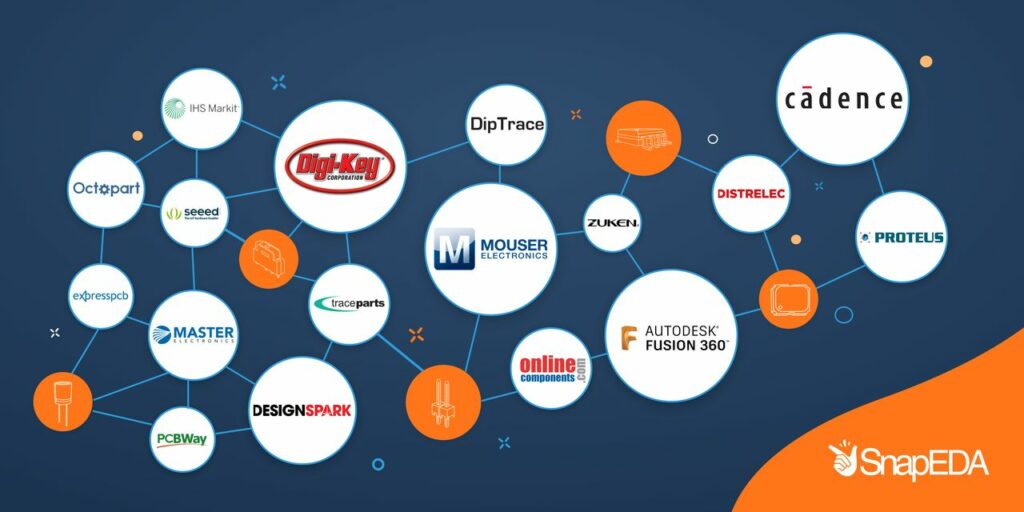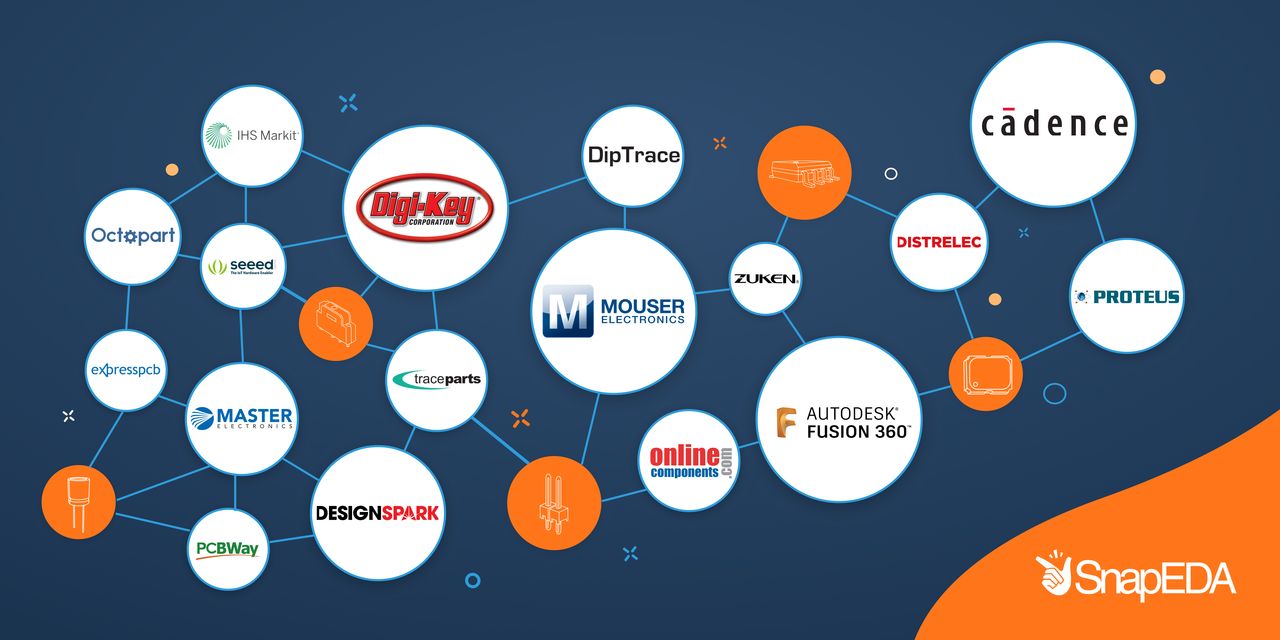
SnapEDA announced a new Syndication Network that releases “millions” of 3D models.
SnapEDA is a large-scale search engine for electronics components. Need a USB-C connector for a project? They can help you find different options available from suppliers and place orders.
Those undertaking electronics projects use services like SnapEDA to find the components they need, but there’s more to the story. Electronic projects include not only the selection of components, but also the design of how they are fitted together to form the complete system.
This is typically done with electronics and CAD design tools. One typical tool is Autodesk Fusion 360, where you could, for example, design a case for an electronics system.
But how do you ensure that this case design actually fits with the selected electronic components?
One easy way to do so is to import a CAD model of the component and literally fit it into the case design. Holes can be aligned and sized properly to fit the component easily, because it’s then included in the overall design.
But there’s a catch: where do these component 3D models come from?
Sometimes you would get lucky and the component manufacturer might offer a downloadable 3D model that could be used. But often that wasn’t the case and project designers would have to resort to other means — like buying the part and measuring its essential dimensions manually, or iteratively redesigning and printing the case until it fits. That’s inefficient.
Sometimes component manufacturers would provide 3D models “under the counter”. If directly asked by a potential customer, they might send off an individual copy of the selected 3D model. That’s also inefficient.
The new SnapEDA Syndication Network brings over 30 distribution partners into an ecosystem where such data is available. They explain:
”Today, SnapEDA, the first search engine for electronics design is launching the SnapEDA Syndication Network. This ecosystem of over 30 distribution partners, includes electronic component distributors, printed circuit board (PCB) tool makers, and engineering media sites.
The SnapEDA Syndication Network connects the electronic designers and engineers who are at the heart of the electronic industry with design content for millions of electronic components.”
But how is SnapEDA convincing component manufacturers, who for decades have been very reluctant to release their 3D models? Samtec CIO Daniel Williams provides some perspective:
“Before meeting SnapEDA we were very reactive with our CAD models and only provided them once they were requested. In today’s self-service approach to design, that strategy is no longer effective. SnapEDA has helped us to not only proactively provide CAD models for over 1 million of our products, but also to reach millions of engineers worldwide via their Syndication Network.”
And Samtec is only one of many component manufacturers participating in the network. It’s not known exactly how many 3D models are being released as a result of this move, but it’s certainly many millions.
SnapEDA listed some of the participants:
- Digi-Key
- Autodesk Fusion360
- RS Components DesignSpark
- Cadence
- Mouser
- Zuken eCADSTAR
- Distrelec
- Online Components
- Master Electronics
- Octopart
- DipTrace
- Proteus
- TraceParts
- IHS Markit
- PartsBox
- Semikart
- Devicemart
- ExpressPCB
- TARGET 3001!
- Cadenas
- Electronics Lab
- Seeed Studio
- Inventhub
- OEM Secrets
- Cofactr
- Sourceability
- Endeavor Business Media
- PCBWay
SnapEDA apparently is on the verge of announcing another five new participants as well.
If you’re a 3D printer operator working on electronics projects, this can only be very good news.
Via SnapEDA

